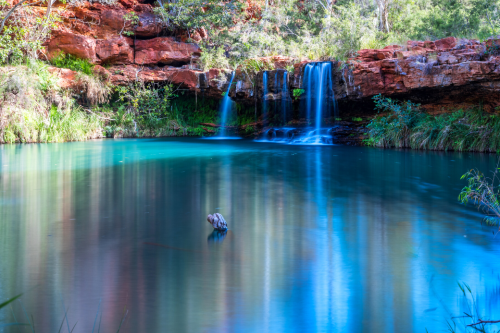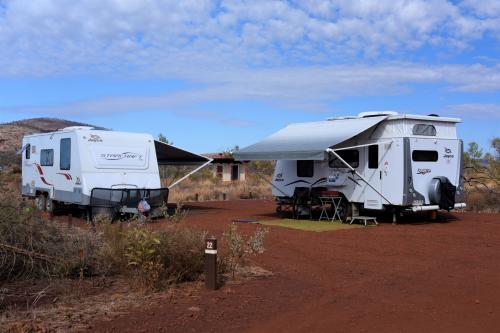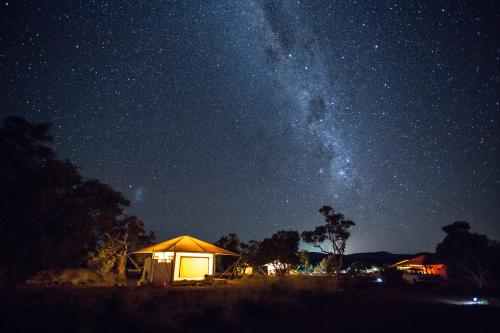About this place
Dales Campground
The large camping area is within easy reach of Dales Gorge, Circular Pool, Fortescue Falls and Fern Pool and is a great place from which to explore the eastern end of the park. Camping fees apply. Bookings are essential. Campsites are in very high demand from June to September.
The only other campground in the park is at Karijini Eco Retreat.
Dales picnic area
Spend a day here or base yourself at the nearby Dales Campground and enjoy several days of walking and picnicking in this awe-inspiring area. You will be constantly surprised by the contrasts of red rock and green ferns, of the dry landscape above the gorge and the cool dampness of the pools. There are several lookouts giving spectacular views of the gorge and trails of various lengths and difficulty leading to Dales Gorge, Fortescue Falls and Fern Pool.
Fortescue Falls
Permanent water is a welcome site in the arid Pilbara environment and Fortescue Falls is the park's few permanent waterfalls. Fed by a spring, it cascades more than 20m down a series of natural rock steps before finishing in a fern-lined pool.
Fortescue Falls Lookout
Enjoy fabulous views of Fortescue Falls from the top of the 100m deep Dales Gorge.
Fern Pool
Surrounded by paperbarks and delicate ferns, the pool is a lush oasis in a harsh environment.
Bushwalking
There are walking trails of various lengths leading from the Dales picnic area and Fortescue Falls carpark. You can swim at Fortescue Falls and Fern Pool. Please read all information carefully. For more information visit TrailsWA.
Circular Pool Lookout
The flat, well-formed trail leads to the lookout and trailhead for the Gorge Rim Walk.
- Distance: 150m
- Difficulty: Class 2
- Time: Allow 15 minutes return
Fortescue Falls viewing area
Follow the trail from the Fortescue Falls carpark to the lookout on the edge of the gorge for great views into Dales Gorge and Fortescue Falls.
- Distance: 150m
- Difficulty: Class 1
- Time: Allow 15 minutes
Fortescue Falls Trail
Descend into the gorge on the steps from the Fortescue Falls viewing area. The vegetation changes as you go deeper into the gorge, becoming more green and lush. The rocks also change colour, becoming a richer red and purple. The pool at the bottom of the falls is a perfect place for a refreshing swim.
- Distance: 800m return
- Difficulty: Class 3
- Time: Allow 1 hour
Dales Gorge Trail
This loop trail runs along the bottom of Dales Gorge and links Fortescue Falls Lookout with Three Ways Lookout. Join the Gorge Rim Trail back to Fortescue Falls Lookout aand parking area.
- Distance: 2km return
- Difficulty: Class 4
- Time: Allow 3 hours and 30 minutes
Fern Pool
From Fortescue Falls you can take an optional 300m detour to Fern Pool along the floor of the gorge. Bushwalking experience is recommended.
- Distance: 600m return
- Difficulty: Class 4
- Time: Allow 30 minutes
Safety information
Plan when to visit. Consider travelling with a personal location beacon (PLB). In the event you need to be rescued it could save your life!
- Blue asbestos is present in Yampire and Wittenoom Gorges. Asbestos dust may cause cancer if inhaled.
- Stay back from cliff edges – they are about 100m high, often with loose rocks near the edge.
- Flash floods can occur – do not enter gorges if there is rain in the area. If it starts raining when you are in a gorge, leave immediately.
- The water in gorge pools can be extremely cold, especially between April and September; hypothermia can occur. Do not dive or jump into water.
- During summer, temperatures frequently top 40°C. Drink plenty of water at all times.
- Dingoes are common around Dales Campground. They may scavenge for food and can be aggressive. Do not feed dingoes, supervise children at all times, walk in groups and store food in your vehicle. Read more in the Be Dingo Aware fact sheet.
Gallery
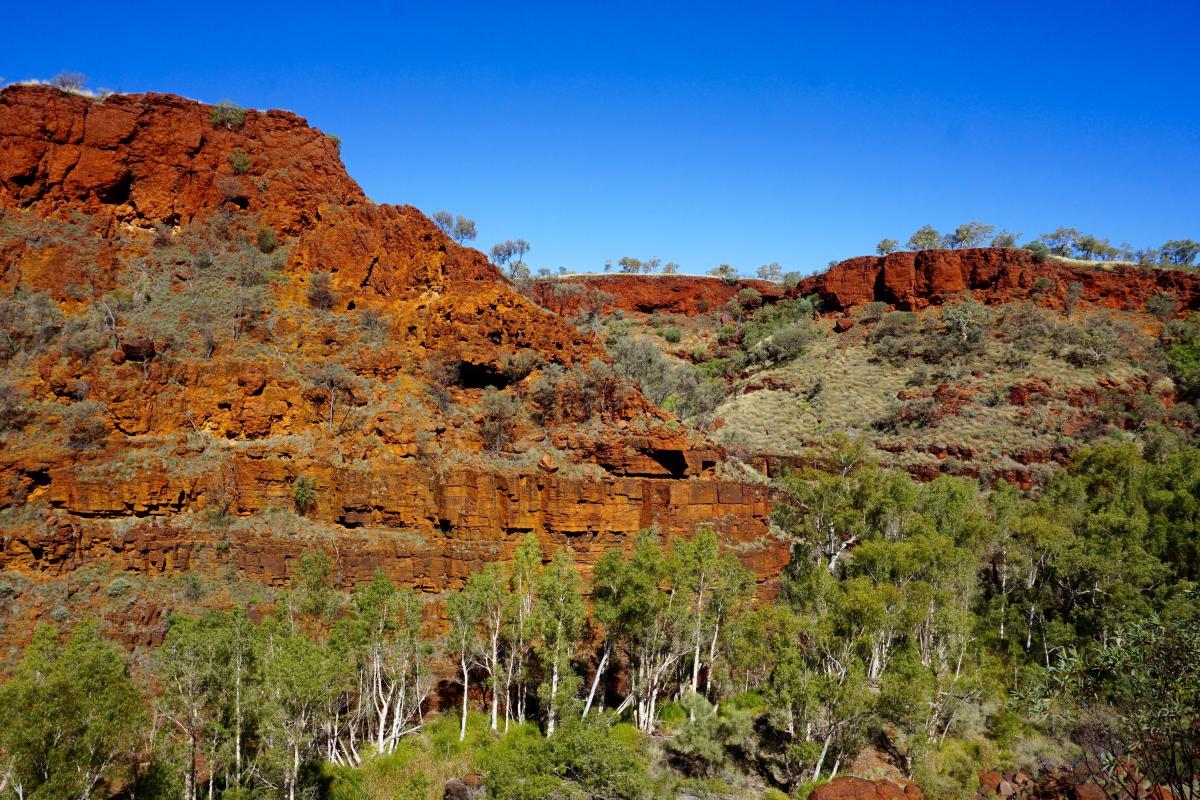
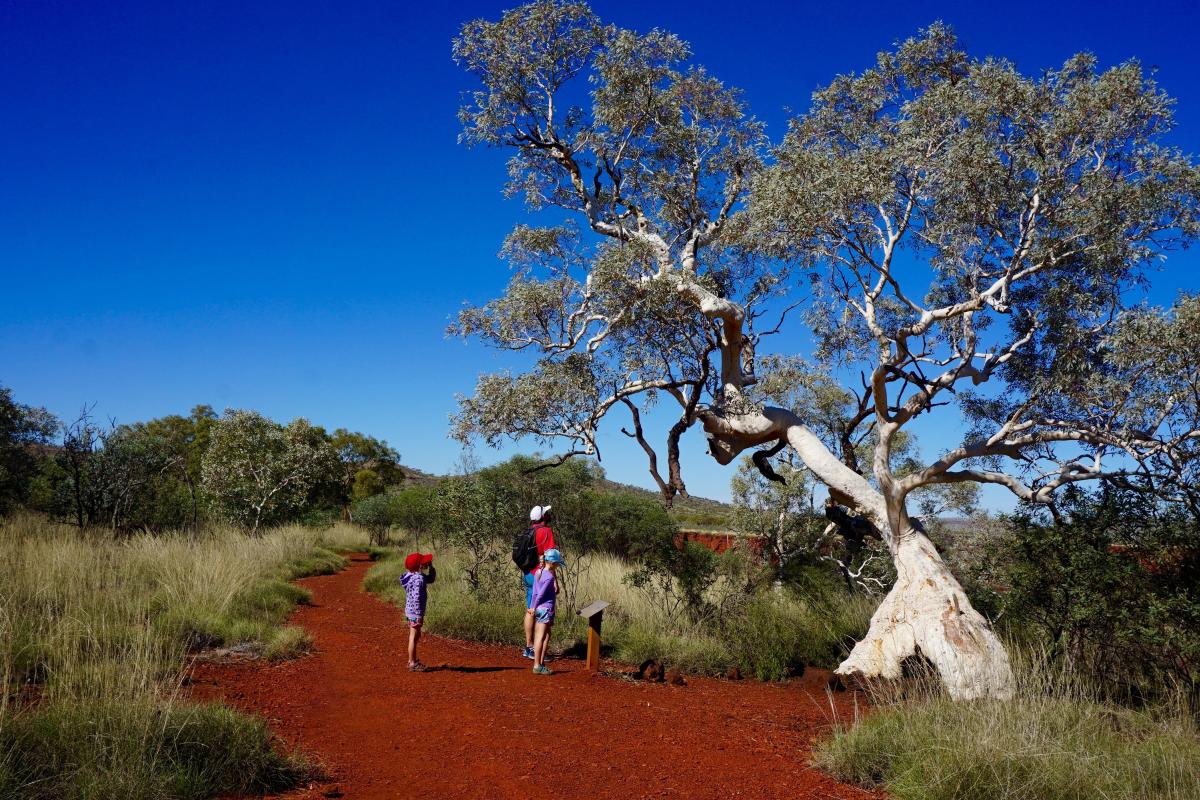
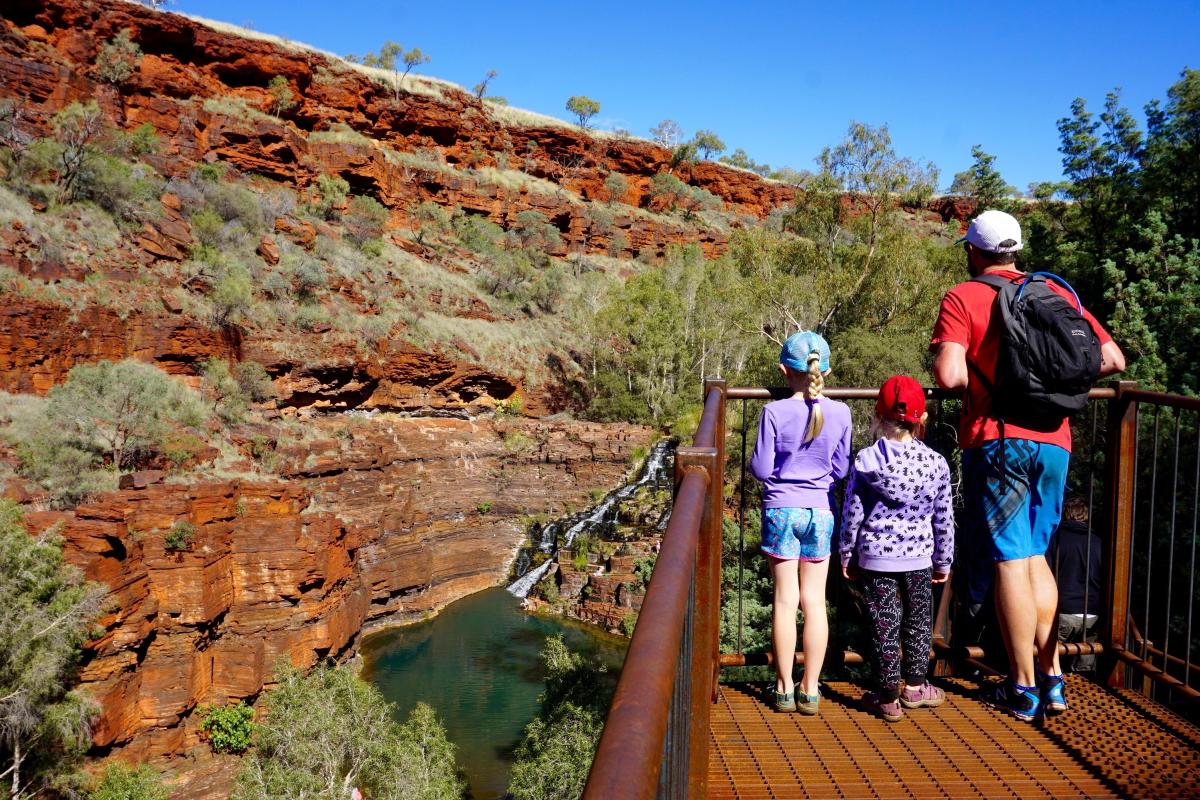
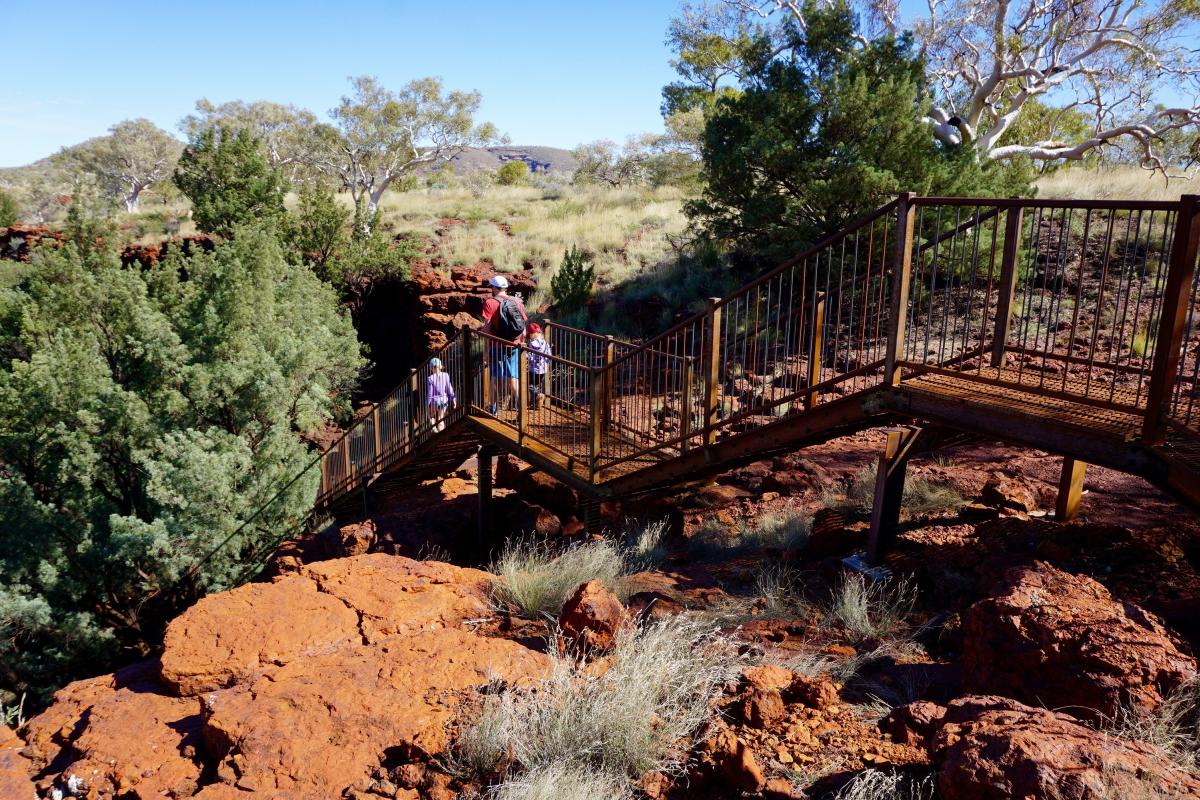
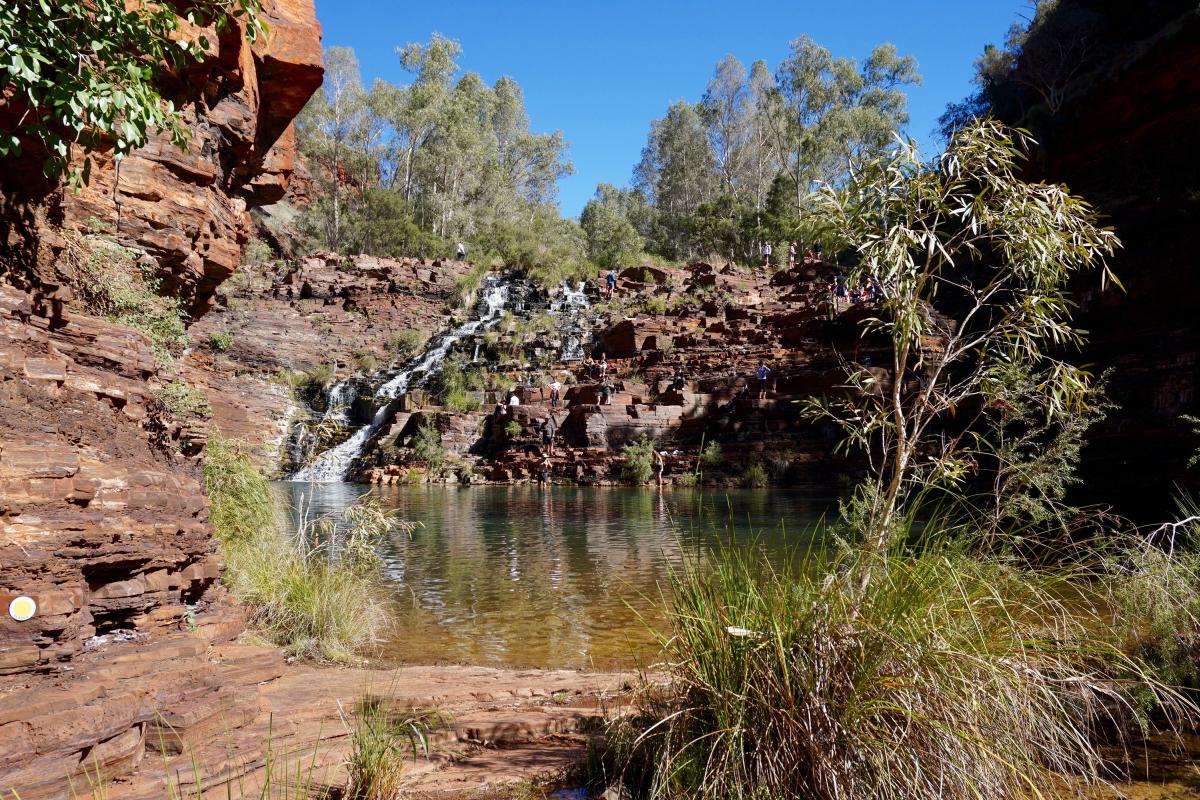
Facilities
Toilet
Lookout/Deck
Activities
 Bushwalking
Bushwalking
 Camping
Camping
 Swimming
Swimming
Plants, wildlife and fungi
Visit the Atlas of Living Australia for a list of species recorded within a 5km radius of Dales Recreation Area.
Traditional Owners
The park is the traditional home of the Banyjima, Kurrama and Innawonga Aboriginal people. The Banyjima name for the Hamersley Range is Karijini. Aboriginal land management practices, such as 'fire stick farming', resulted in a diversity of vegetation types and stages of succession that helped determine the nature of the plants and animals found in the park today.
We recognise and acknowledge Banjima, Innawongka and Eastern Guruma people as the traditional owners of Karijini National Park.
